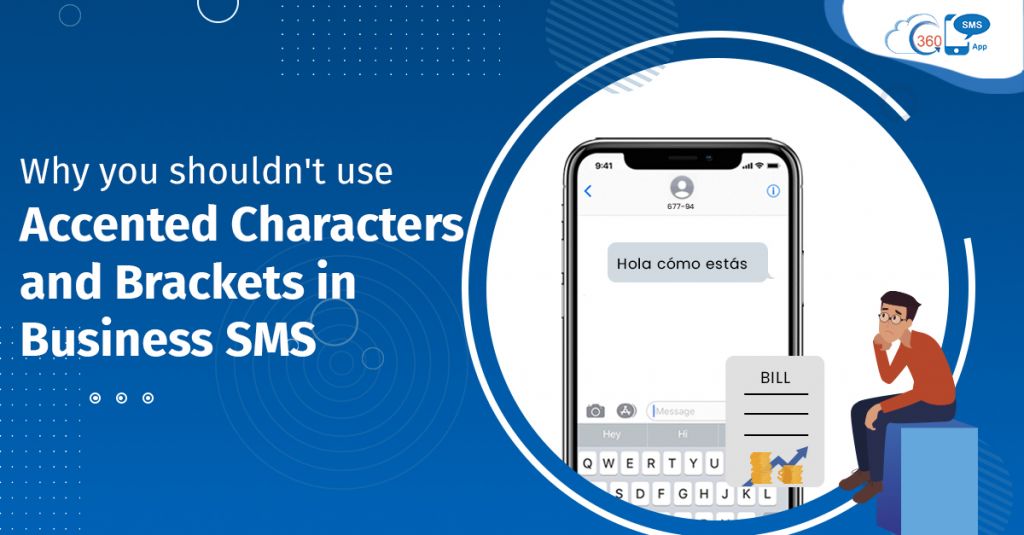Why you Shouldn’t Use Accented Characters and Brackets in Business SMS
Marketers put in their sweat, blood, and tears to minimize business expenses and maximize returns. But sometimes, they can’t get around high SMS bills despite all the planning done to keep campaign text messages short and limit them to just one or two SMS segments. Inadvertently, the text splits up into multiple SMS segments, which leads to increased SMS costs and bills. One of the biggest reasons for high SMS bills is accented characters and brackets in business text messages. So, users should be cautious while drafting each text and consider every factor that can multiply the numbers of SMS segments and increase business investments.
What are Accented Characters and Brackets?
Accented characters are those characters that consist of accent marks. Accent marks are diacritic marks placed above or below a letter in a word to represent a specific pronunciation. Sometimes, these marks are placed next to the letter also. These marks differentiate accented characters from others and add a particular phonetic value. Accented characters do impact SMS segment limit and SMS bills too.
For example- áéíÓÚ Ñ ñ Ö ö
Brackets are punctuation marks used to enclose words, figures, or a segment of texts to separate them from other content. It doesn’t matter whether it is a curly or square bracket; they affect the SMS character limit.
Why Avoid Accented Characters and Brackets in Business SMS?
Not only just accented characters and brackets, but you should also avoid emojis in business messages too. A few crucial reasons to avoid accented characters and brackets in business SMS are they increase SMS segments, SMS bills, and ultimately business investments.
Accented Characters
GSM stands for Global System for Mobile Communications, and GSM-7 is an encoding standard that uses 7-bit encoding to send Salesforce messages on GSM networks. By default, text messages use 7-bit encoding to send messages. The character limit for a GSM-7 encoded SMS is 160 characters. But when you add accented characters in a text, it turns encoding to 16-bit, which is UCS-2 encoding.
Such messages are called Unicode messages, and the character limit for one Unicode SMS is 70 characters. This is why you shouldn’t use accented characters in texts. Else, it could reduce the SMS segment character limit and increase SMS segment usage for your business.
Brackets
Though brackets do not require UCS-2 encoding as they use GSM-7 encoding, still, brackets impact SMS character limit and SMS bills. Brackets are represented through an escape mechanism.
Thus, brackets use escape characters which is why brackets exhaust 2 characters in GSM encoding. So, the more brackets you’d use in SMS, the more character space will be exhausted, and the SMS segment count may increase.
Reduce SMS Segments and Bills with MORE SMS character Space
Accented characters and brackets hold unique importance and specific purpose in texts. Completed understanding of accented characters and brackets in business text messages help users use them prudently and only when required. This helps users easily cut back on SMS segment counts and reduce messaging expenses and SMS campaigns costs. Creating SMS campaigns and text messages considering accented characters, brackets, and emojis, help users reduce unwanted usage of such characters and send meaningful messages limiting them to just one or two text messages.
For more information on encoding and SMS segments, reach us at care@360smsapp.com or contact us here.


